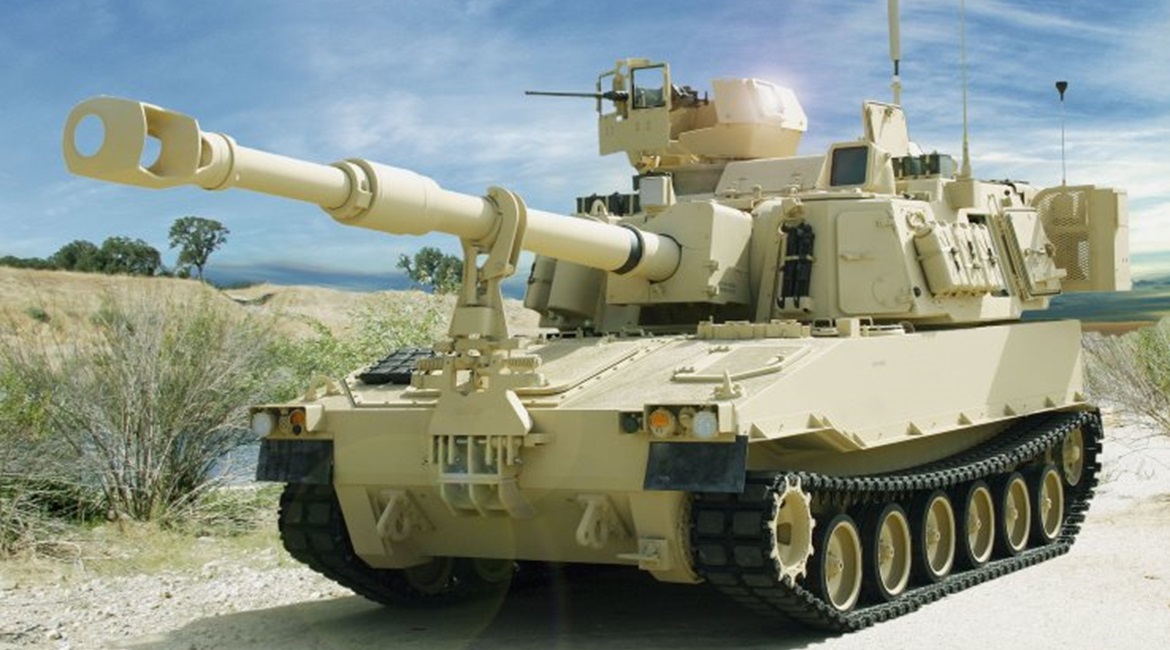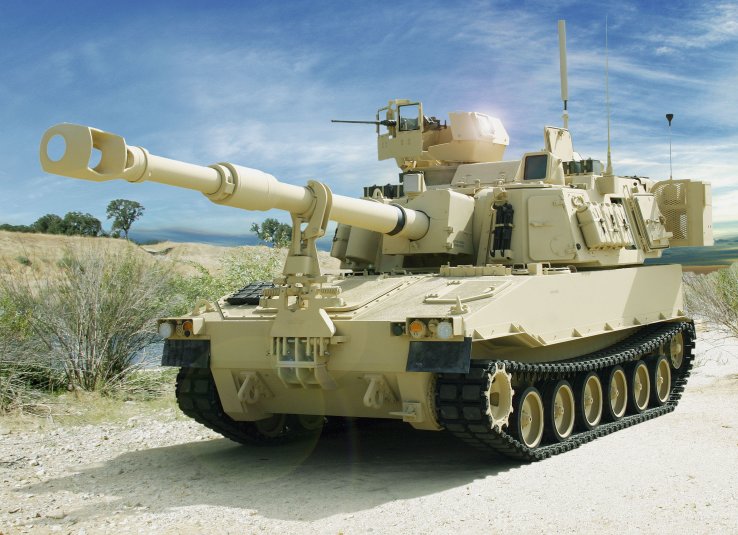
Delivery delays and assembly line challenges continue to plague BAE Systems’ production of the US Army’s M109A7 self-propelled howitzer and have factored these into the service’s deferment of a full-rate production decision.
Over the past two years the company has faced several challenges producing the new howitzer and in 2017 it even halted deliveries for six months to address welding problems. Although the company has made “moderate improvements” during the past six months, its howitzer deliveries remain “inconsistent”, fluctuating between one to four vehicle deliveries per month, according to Ashley John, public affairs director for the Program Executive Office for Ground Combat Systems.

One of the five prototype 155 mm/39-calibre M109A6 Paladin Integrated Management (PIM) 155 mm SPH in travelling configuration. BAE Systems' efforts to correct past welding problems have resulted in delayed deliveries of the weapon to the US Army. (BAE Systems)
These delays influenced the service’s decision to postpone a full-rate production decision until the October to December timeframe, which “allows BAE to demonstrate improved quality and the ability to produce vehicles at a higher rate than [the] current capability”, John told Jane’s on 25 June.
Notably, the army wants the company to achieve three tasks to “regain schedule” and prepare for the full-rate production decision: expansion of its weld line to allow for improved throughput, expansion of the machining center to allow for improved throughput, and expansion of its facility in Elgin, Oklahoma for improved throughput.
Looking to read the full article?
Gain unlimited access to Janes news and more...




